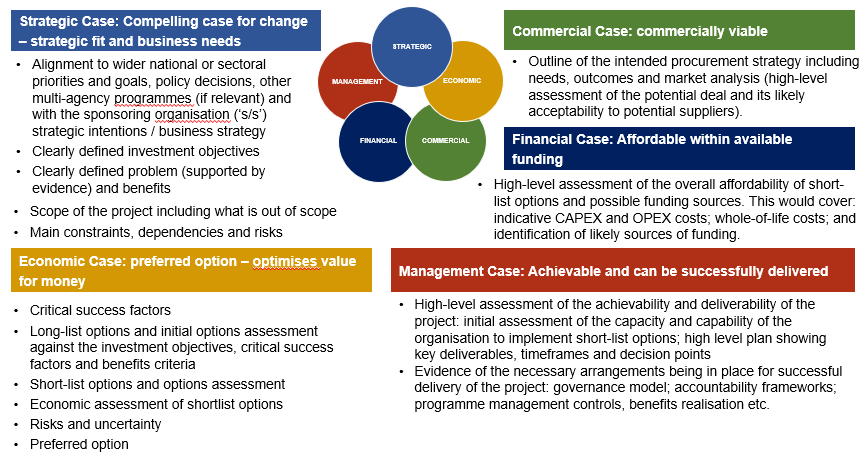
Road map toward Central
Government Co-investment in
community resilience against flood
risks
P U R P O S E A N D O V E R V I E W
• Recommend a roadmap for securing central government Budget 2023 co-
investment (and subsequently yearly commitments) to build further community
resilience against flood risks.
• Set out the project plan / roadmap for completing a detailed co-investment
business case for delivery by 31 November and subsequent work, to ensure
inclusion in Cabinet provisional Budget 2023 plans.
• Provide other details about the process to be applied to this ‘
Flood Risk Resilience
Aotearoa’ project.
• Outline planned engagement and communication considerations, including the
operating environment affecting Te Uru Kahika community flood risk resilience
co-investment requests.
B A C K G R O U N D
INITIAL CO-INVESTMENT REQUEST (AUGUST 2020)
Critical information collated by Tonkin + Taylor (2018) about the investment and
protection value provided by existing flood protection schemes was included in a Te Uru
Kahika flood risk co-investment report (August 2020) for Ministers. This report requested
a central government contribution of $150m per annum to add resilience against the
flood risks posed to many New Zealand communities. This request was on top of the
$200m of on-going investment committed by regional councils, to provide a total of
$350m per annum required to take account of the increasing impact of climate change.
The report contained ten case examples describing the devasting impact on communities
of the flood events that had occurred in their regions over the previous five years.
CABINET PAPER (JULY 2020)
DIA prepared a Cabinet paper exploring and establishing broad government policy about
flood risk resilience. The paper noted (paraphrased here for brevity):
• Current funding arrangements for flood protection infrastructure were
established over 30 years ago. They are no longer sustainable or consistent with
delivering outcomes in line with (the) proposed framework and principles
(outlined elsewhere in the Cabinet paper).

• Central Government’s funding approach to building resilience should consider the
benefit principle, fairness, and intergenerational wellbeing.
• Officials will work with Local Government to develop a revised funding model for
flood protection, based on the Cabinet paper’s proposed framework and
principles, for implementation over the longer term.
• Officials will target action where national assets and national interests warrant
Central Government intervention and funding.
• Officials will support projects where there is a significant economy of scale, time
constraints, distributional concerns, and a need to protect health and safety, and
to protect kaitiakitanga.
SHOVEL READY PROJECTS (2021)
The 2020 co-investment report was seminal in persuading government to fund Shovel
Ready, Post-Covid-Recovery flood protection projects. A total of 55 projects, with a value
of around $313m, received $217m from central government. The cost share from central
government toward these projects was 75% for poorer regions and 64% for others.
These projects are now being delivered by regional councils throughout New Zealand.
Governance oversight of this delivery is provided via Kānoa.
Most existing Shovel Ready projects are timed to be completed by 30 June 2023. Some
wil take another year or two to complete. There has a been a substantial commitment by
regional councils to build increased staffing and associated capacity to undertake this
major programme. This lends itself to future continuity, as part of a future central
government community flood risk resilience co-investment programme.
SUPPLEMENTARY CO-INVESTMENT REPORT (JANUARY 2022)
Central government’s co-funding of shovel ready projects was valued and valuable to
those regional communities receiving funding. The pervading problem is this funding was
a ‘one-off,’ available only to those projects that were ready to go – and not necessarily all
reflecting community vulnerability and flood risk / resilience investment needs.
This vulnerability was aptly displayed by three community flood events that occurred in
2021. These provided the base for the three case studies (Ashburton, Blenheim, and
Westport) described in a further 2022 ‘supplementary’ co-investment report.
The supplementary report re-emphasised the call for national leadership in flood
management as a ‘critical first action’ response to the challenge of managing the flood
risks associated with climate change. The report also:
• Noted flooding is the number one commonly occurring natural hazard in New
Zealand.

• Noted the regional council commitment to a contemporary approach to flood risk
management.
• Noted the cost-benefits of flood protection schemes (NB an NZIER report
prepared for DIA in 2020 suggests that investment in flood protection structures
provides better value for communities than investment in protecting communities
from any other natural hazard).
• Requested central government co-investment of $150m pa to fill the gap in the
$350m per annum total sum identified by regional councils as being the necessary
investment in future community flood protection.
• Called for central government to work with regional councils to immediately
reach agreement on co-investment expenditure guidelines.
GOVERNMENT RESPONSE TO SECOND REPORT
Minister Mahuta responded to Te Uru Kahika’s second supplementary co-investment
report by noting the:
• Possibility of including flood protection schemes in future ‘post 2022’ budgets,
including mention of the new CERF as a possible source of funding.
• Intent to view flood protection schemes as part of an integrated suite of flood risk
management solutions, some of which wil be included in proposed resource
management legislative amendments; some of which will be outlined in the
Climate Change Adaptation Plan.
• Value of the work undertaken by the River Managers’ SIG on flood risk
management issues.
• Opportunity that wil be provided by the Westport co-investment business case to
develop and test a framework for enabling a collaborative effort to reduce flood
risk.
WESTPORT PILOT CO-INVESTMENT CASE STUDY
The Westport community flood risk resilience report applied central government’s ‘Better
Business Case’ (BBC) framework to seek $45m (80%) of the $56m cost of proposed
initiatives falling across protect, accommodate, retreat / relocate, and avoid (‘PARA’)
community flood resilience framework elements. DIA has been the lead Ministry for this
work, along with close cross-government involvement from Treasury, MfE and NEMA.
The final business case was sent by West Coast Regional Council and Buller District Council
to Minister Mahuta on 30 June. It is expected to go to Cabinet for final approval in
September 2022.
DIA are now (July 2022) assessing the Westport business case to determine its validity on
technical, funding, policy, and political grounds. As part of this assessment, DIA have

undertaken a ‘rapid assessment’ of how many other communities throughout New
Zealand may be in a similar position to Westport. To do this DIA have commissioned:
• NIWA to undertake community deprivation, flood risk and potential value of
assets at risk modelling.
• Tonkin + Taylor to review regional council LTP and 30-year Infrastructure Plans to
identify council future investment needs and intentions, noting that DIA has a
Tonkin + Taylor staff member assigned to work directly to DIA on a similar
proposal.
• Regional councils to identify, via MURAL postings, those communities they feel
are most at risk.
In addition, the River Managers SIG have commissioned one of their members to do a
stock-take / update on regional council flood protection investment intentions.
M A T T E R S I N F L U E N C I N G F U T U R E T E U R U K A H I K A C O - I N V E S T M E N T
R E Q U E S T S
CABINET PAPER (JULY 2020)
The July 2022 Cabinet paper provides a clear indication of central government’s interest in
co-investment, but within defined bounds. These bounds are mostly related to a
wil ingness to contribute funding to communities with deprivation, to projects reflecting
other matters of national interests, and to projects reflecting the PARA approach.
PRECEDENT FROM WESTPORT
The Westport case study provides a likely precedent for that now required to be applied
for Te Uru Kahika to be successful in their request for future community flood risk-
mitigation co-investment funding. Apart from the Westport project’s adherence to the
BBC framework (see further details provided below), other important features likely
requiring to be mirrored from the Westport case study in future similar requests, include:
• Application of an adaptative pathway approach.
• Initial consideration of a wide / long list of community flood risk resilience options
using agreed critical success statements and objectives.
• Assessment of preferred options against an agreed list of assessment criteria such
as constructability, consent-ability, Te Ao Māori, levels of service, community and
landowner approval, disruption, access and occupation agreements, co-benefits,
impact on crown assets such as rail and roads, multi-hazard risks and benefits and
the timeframe / staging of the project.

BETTER BUSINESS CASE FRAMEWORK
An overview of the five BBC elements fol ows, together with a brief description of what is
required to satisfy these elements. (NB further details are provided within a model provided
in appendix one).
•
Strategic case: the alignment of the need for change with wider national and
sectoral priorities, goals, policy decisions and programmes, the commitment to
the four well-beings and living standards framework, district / regional
equivalents of these matters, the scope of the project, the chal enge to be
addressed and the benefits sought.
•
Economic case: the critical success factors, the process applied to move from a
long list of options to a preferred set of options, the economics of preferred
options and the cost / benefit of these options
.
•
Management case: the approach to be applied to deliver on the preferred set of
options and the plan to al ow for that delivery
.
•
Commercial case: the procurement strategy and the ability of the market to meet
needs
.
•
Financial case: a high-level assessment of the affordability of the short-listed
options and possible funding sources.
GOVERNMENT’S BUDGET REQUEST GUIDELINES
Treasury’s budget formulation process has the fol owing broad steps:
•
Strategic phases (June – December): This involves the development of an overall
strategy for the Budget, including strategic priorities and targets for spending,
revenue, the projected fiscal surplus, and public debt intentions. Decisions taken
during this ‘strategic phase’ are reflected in the Government's Budget Policy
Statement (BPS) which is required to be tabled in Parliament in the subsequent
March.
•
Decision phase (January-April): Ministers put forward Budget initiatives for
consideration and then the Treasury assesses them and prepares
recommendations on which initiatives Ministers should support. This advice is
then collated, shared with various Ministerial Groups, and considered by Budget
Ministers (the Prime Minister, the Minister of Finance and the Associate Minister
of Finance, the Hon Dr Megan Woods) who put forward a Budget package to
Cabinet for a final decision.
•
Subsequent phases: This involves the
o Budget production phase leading to ‘Budget Day’ legislative phase, in turn
leading to Parliamentary support of Government’s budgetary package
(spending for the year(s) ahead.
o Legislative phase often involving examination of the estimates for each
Vote by the appropriate Select Committee.
o Implementation phase leading to spending being authorised via the
Appropriation (Supplementary Estimates) Bill.
The role of Treasury in the budget build process includes them compiling and processing
budget ‘initiative proposals’ from Vote Ministers. The Treasury have a set of standard

instructions (‘Treasury Circulars’) they and departments must follow when preparing
budget requests.
The timing for the Te Uru Kahika request is therefore good. The Treasury process implies
Te Uru Kahika will first need to secure the support of DIA and Vote Minister Nanaia
Mahuta before then formally lodging an application. It also implies Treasury should
become part the ‘Community Flood Risk Resilience Aotearoa’ project budget-build
process.
DIA’S RESPONSE TO PREVIOUS TE URU KAHIKA CO-INVESTMENT REQUESTS
The DIA and MFE etc work program is substantial. It has been viewed by them as too
cluttered to give flood risk mitigation measures particular attention. Furthermore, DIA
officials have said they do not have sufficient budget to add projects to their current
workload.
Te Uru Kahika understand this pressure and notes the DIA / MfE etc., current programme
includes participation in the development of the:
• Climate Change Adaptation Act.
• National Adaptation Plan.
• Natural and Built Environments Act (NBE Act).
• National Planning Framework content as part of proposed NBE Act.
• Westport community flood risk resilience mitigation pilot study.
In addition, it is likely the absence of a clear ‘Vote’ category (up until the establishment of
the Climate Emergency Response Fund – CERF) for sourcing ‘community flood risk
resilience investment funding’ may have further complicated things. Nevertheless, Te Uru
Kahika would argue that building community resilience against flood risks via structural
solutions is not something that can be left to languish.
A further challenge for DIA is they have only four key staff directly involved in community
resilience. Most of DIA’s previous wider ‘natural hazard’ policy work has now shifted to
MfE.
In addition, the earlier active Community Resilience Officials Group that Basil Chamberlain
and other council representatives were part of, appears currently inactive, but with
potential to be re-activated.

POTENTIAL FUNDING SOURCE
The CERF is a potential source of funding. The initial focus of expenditure from this fund
has been on emission reduction actions. Treasury have provided an indication that the
longer-term focus may be on ‘adaptation’ actions. This plays wel to the current
community flood risk resilience project need to have a clear funding source.
WORK STREAMS THAT MAY BE DRAWN FROM THE ABOVE SIGNALS
The above information provides several pointers about what Te Uru Kahika may now need
to do to secure central government’s commitment to co-investment in community flood
risk mitigation. It implies Te Uru Kahika may need to:
1. Assess comparative community vulnerability / deprivation / affordability.
2. Better document the state of our existing protection infrastructure and the
investment needed to provide higher levels of climate-change-ready resilience.
3. More accurately describe the incremental nature of the Te Uru Kahika co-
investment request and more accurately tie this to the priority projects that
should be funded in years one, two, three and beyond.
4. Document the value of the assets and communities protected by flood protection
structures.
5. Document how each flood risk mitigation structural proposal will meet agreed
assessment criteria including those related to the environment, managed retreat
and te mana o te wai.
6. Describe the capacity / capability of regional councils to implement flood risk
mitigation structures.
7. Shift our funding request to accommodate a more comprehensive PARA / multi-
tool / integrated, adaptive management, nature-based, Te mana o te wai / Te Ao
approach to community flood risk resilience (in the face of climate change)
approach.
8. Demonstrate the results of application of a long-list to short-list approach to
building community resilience to flood risks.
9. More fully document flood protection investment needs via regional council LTPs
and 30-year investment plans – noting these current documents may be too
cautious / risk averse because of the absence of local funding sources.
10. Factor in consideration of how Shovel Ready Kānoa Climate Resilience Flood
Protection Programme funding and delivery will be included in 2023-24 and 2024-
25 and the extent that this programme can be adapted as a delivery mechanism
for the longer-term co-investment requested, at least for the initial next 3 years.
11. Work with DIA to better define a national prioritisation principles, framework and
priorities for co-investment, alongside the balance within the funding provided for
operational / maintenance vs capital projects vs fully developed / catchment wide
/ PARA approaches.
 S C O P E A N D A S S U M P T I O N S
S C O P E A N D A S S U M P T I O N S
Flood risk mitigation structures focus: The past Te Uru Kahika co-investment reports have
focused on flood risk mitigation structures. It is proposed this focus be retained, albeit
supplemented with clear statements indicating how other PARA elements wil be
progressed in an integrated manner or as part of longer-term managed-adaptation
planning approach.
Partnership with DIA: It is also clear from the above information it will be difficult to
navigate through the Treasury budget-application process unless Te Uru Kahika secures a
partnership in this process with DIA.
Incremental build of investment request: A ten-year investment frame is proposed with
an agreed incremental build. This may progress from the current Shovel Ready focus –
with associated capacity and capability being retained, to central government co-
investment of say:
• $50m at 2023/24
• $100m at 2024/25
• $150m at 2025/26
• $150m in out years forward until 2033 and beyond.
Cost share formula: The core decision needing to be developed, with central government,
is how much money or what percent of the total cost will be allocated by central
government for:
• Operational / maintenance projects.
• Capital projects.
• Different project locations - to reflect variance in comparative wealth /
affordability / deprivation status.
More robust evidence: It is clear regional councils (alongside DIA) will need to do more to
clearly demonstrate how each of their flood risk mitigation project proposals will satisfy
the information needs listed at points 1-11 above.














 P R O J E C T P H A S E S A N D O U T P U T S
P R O J E C T P H A S E S A N D O U T P U T S
Te Uru Kahika envisage applying the following broad phases to this project, noting that
due to deadline constraints, several of these will be developed in parallel.
PROJECT
BACKGROUND
ENQUIRY – TEST CO-
ESTABLISHMENT
RESEARCH
INVESTMENT CONTENT
DEVELOP
PARTICIPATE IN
CONFIRM
CONSOLIDATED
BUDGET BID PROCESS
COINVESTMENT
BUSINESS CASE
DELIVERY &
01
Phase one: Project establishment and agreed approach.
The River Managers SIG will:
o Socialise and urgently receive the support of River Management thought
leaders for the approach described in this paper.
o Seek the support and sponsorship – with the help of Michael McCartney
and Stefanie Rixecker, of the RCEOs, the Regional Sector Group Chairs and
LGNZ.
o Convene a meeting between Michael McCartney, Stefanie Rixecker with
DIA senior officials to brief them about the content of this brief.
o Forward correspondence to Minister Mahuta advising her of our intent to
head down the path described in this brief.
o Prepare and release communication material - nationally and regionally,
to ‘warm the soil’ and then periodical y sustain the pubic / community
warmth toward central government and Ministerial adoption of this
proposal via future regular and timely releases.
o Enrol the support of third parties such as NIWA and the Infrastructure
Commission.
o Socialise and receive the support of senior officials for the proposal from
Treasury, and MfE, including on the draft contents listed here.
o Prepare a draft paper on Steering Group (central government and
regional councils at Director CEO level), Governance (Minister of Local
Government / Chairs x 2), and timeline / milestone arrangements (see
draft below).
o Confirm arrangements through which members of the River Managers
SIG can be kept informed and participate in this project.





o Under the leadership of Te Uru Kahika project sponsors, reach agreement
with senior officials about Steering Group, Governance, and phases /
timeline / milestone matters.
o Forward correspondence and then meet with Minister Mahuta to confirm
Te Uru Kahika intentions re the process to secure co-investment - in the
manner described in this paper.
o Meet with Associate Minster Kieran McNulty to enrol his support for both
the flood risk resilience Aotearoa programme and the Westport pilot
case.
o Review, and progress investment intention data gathering already
underway with Tonkin + Taylor and internally to ensure this work is
completed in a timely manner.
The output of this phase would be an agreed and detailed project approach
statement.
Phase two: Background research
02
o Interrogate the information gathered by DIA as part of their Westport Case
Study technical review and appraisal process.
o Commission third party research from Tonkin + Taylor, NIWA and others as
may be appropriate e.g., value of assets protected – and other matters as
listed in points 1-11 above.
o Request regional councils to develop prioritised projects for each of their
regions containing information demonstrating how each of their proposed
flood risk mitigation projects satisfy the nine areas of enquiry and defining
what priority / when the project should be undertaken.
o Consolidate the results put forward by each region.
o Invite River Managers and DIA officials to use the consolidated results of the
regional research to develop an Aotearoa flood risk resilience cost share and
project prioritisation proposal covering both operational and capital
elements.
o
The output of this phase will be a consolidated statement of regional flood
risk mitigation needs and a first draft of a proposal through which these needs
may be met.
Phase three: Enquiry – test co-investment proposal
03
o Receive comment / endorsement from the project Steering Group,
Governance Group, RCEOs / Regional Sector Chairs etc. for the proposed cost







share / annual prioritisation, regional prioritisation and operational / capex
formula.
o The output of this phase would be an agreed cost share approach.
Phase four: Develop consolidated business case using the Better
Business Case framework
04
o Use research from regional councils to complete an indicative business case
for consideration as part of the Budget 2023 process.
o Work with the Steering Group (NB inclusive of Treasury officials) to refine the
business case.
o The output of this phase would be an agreed business case.
Phase five: Budget-build process
05
o This phase will largely be led by senior officials from DIA, with support from
appointed River Manager SIG members and their advisors.
o The output of this phase will be a secured flood risk mitigation line item – and
associated trouble shooting, in each of the documents leading up to the
formal release and confirmation of Budget 2023.
Phase six: Implementation arrangements
06
o The final phase is to establish arrangements, probably alongside Kānoa,
through which agreed co-investment projects are managed and delivered ‘on
time and within the agreed budget’.
o This will likely involve the provision of on-going governance oversight and
reporting to the Minister(s) about delivery and the establishment of
arrangements that provide necessary certainty about the capacity of Te Uru
Kahika to deliver the proposed projects.
The output of this phase wil be necessary incremental delivery of projects
providing much needed certainty to the many New Zealand communities facing
anxiety and uncertainty because of flood risks.

 P R O J E C T M A N A G E M E N T A N D G O V E R N A N C E
P R O J E C T M A N A G E M E N T A N D G O V E R N A N C E
We propose that a multi-level structure be applied to manage the project with a project
manager being appointed to drive the project and provide the glue between various
parties.
• A high-level governance group would participate in a short 30-minute Flood Risk
Resilience Aotearoa project update zoom monthly.
• A Flood Risk Resilience Aotearoa Steering Group would also meet monthly to
provide detailed feedback on core project considerations and propositions.
• A Flood Risk Resilience Aotearoa Project Manager should be appointed to ensure
that critical deadlines, information sharing, and information inputs are received –
in accord with this project brief.
• The Te Uru kahika Flood Manager River Mangers’ Champions ‘Thought Leadership
Group’ may be used to test key propositions.
• Te Uru Kahika Flood Managers SIG would be kept informed of progress at their
usual meetings. All regional council river and flood management officers will need
to be kept abreast of the project and be open to help provide necessary input
information at short notice and when requested.
T I M E L I N E
We envisage the project schedule operating from mid-July (18 July) through to the end of
November 2022 and beyond (for monitoring progress to ensure budget bid is secured).
Our indicative timeline is as follows, noting that phases 2-5 will proceed in parallel, albeit
with a focus as indicated, and preliminary work can commence as soon as this brief and
funding is approved.

The proposed preliminary work will include micro-scheduling necessary tasks and
commissioning necessary specialist ‘input’ research.
In the period fol owing the phases and actions proposed during the five months described
below, project leadership is likely to shift from a joint Te Kuru Kahika / DIA approach
toward one more centred in DIA – albeit with information and support being readily
provided by Te Kuru Kahika as required.
Month:
August
September
October
November
Week:
2
&
1
1
2
3
4
1
2
3
4
1
2
3
4
1
2
3
4
eek eek
eek
eek
eek
eek
eek
eek
eek
eek
eek
eek
eek
eek
eek
eek
eek
W W
W
W
W
W
W
W
W
W
W
W
W
W
W
W
W
Project agreed:
1: Project
establishment
and agreed
approach
2: Background
research
3: Test co-
investment
proposal /
formula
4: Develop
consolidated
business case
5: Budget-build
process
6: Implement-
ation
arrangements.


Appendix one: Better Business Case Framework
Document Outline







































